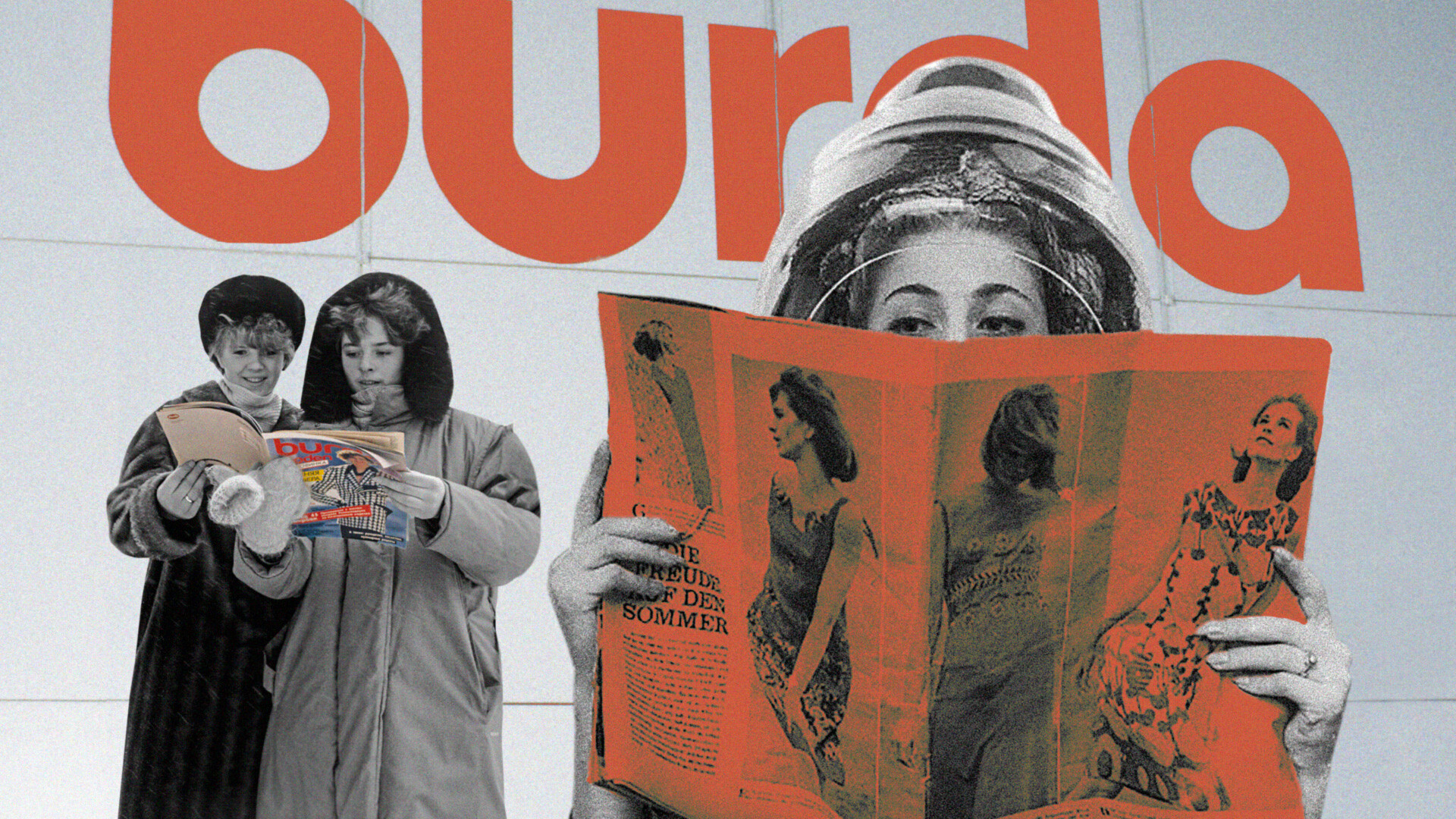
Life even in the late USSR was far from a consumer paradise. The identical unfashionable clothing and interior items that the masses could purchase at a store evoked in them a feeling of monotony and the “grayness” of the surrounding reality. It was especially hard to cope with for women, who naturally strive to stand out and adorn themselves, as well as to decorate their homes. Soviet people could see the “pretty” life overseas in foreign movies. Sometimes, different artifacts of this life – “imported” boots, handbags, blouses or even tea sets (although those were from the Socialist Bloc countries) – were brought to Soviet stores. In the end, both those who managed to acquire these coveted goods and those who didn’t felt even sharper discontent towards the grayness of reality and the same strive to participate in the colorful Western life.

A girl with flowers.
Vsevolod Tarasevich/МАММ/МДФAnd then, at the very end of the 1980s, the women of the USSR found a window to the exciting world of Western abundance. A German sewing and handicraft magazine called ‘Burda’ began to be sold in the USSR. With it, even an inexperienced-in-needlework woman could turn into a stylishly dressed beauty straight off a magazine cover, competing even with the fashionable women of Bonn and Berlin. But it wasn’t just about sewing and knitting. Advice on how to organize your home, how to cook food and about other little things gave an opportunity to soak in a piece of Western European reality and bring it to life.
The USSR, of course, also had fashion magazines. Right after World War II, magazines like ‘Modeli Sezona’ (‘Models of the Season’), ‘Zhurnal Mod’ (‘Fashion Magazine’) and ‘Moda Stran Socializma’ (‘Socialist Countries’ Fashion’) began developing actively; in them, one could find models of women’s, men’s and children’s clothing. Although these magazines were not too numerous, one got the general idea of what is worn in the current season in the European capitals. The problem, however, was in the fact that only the style or even just an outline of this clothing was shown there. To replicate something like that, one needed a tailor of a high level. Some people knew tailors like that, of course, but not many.
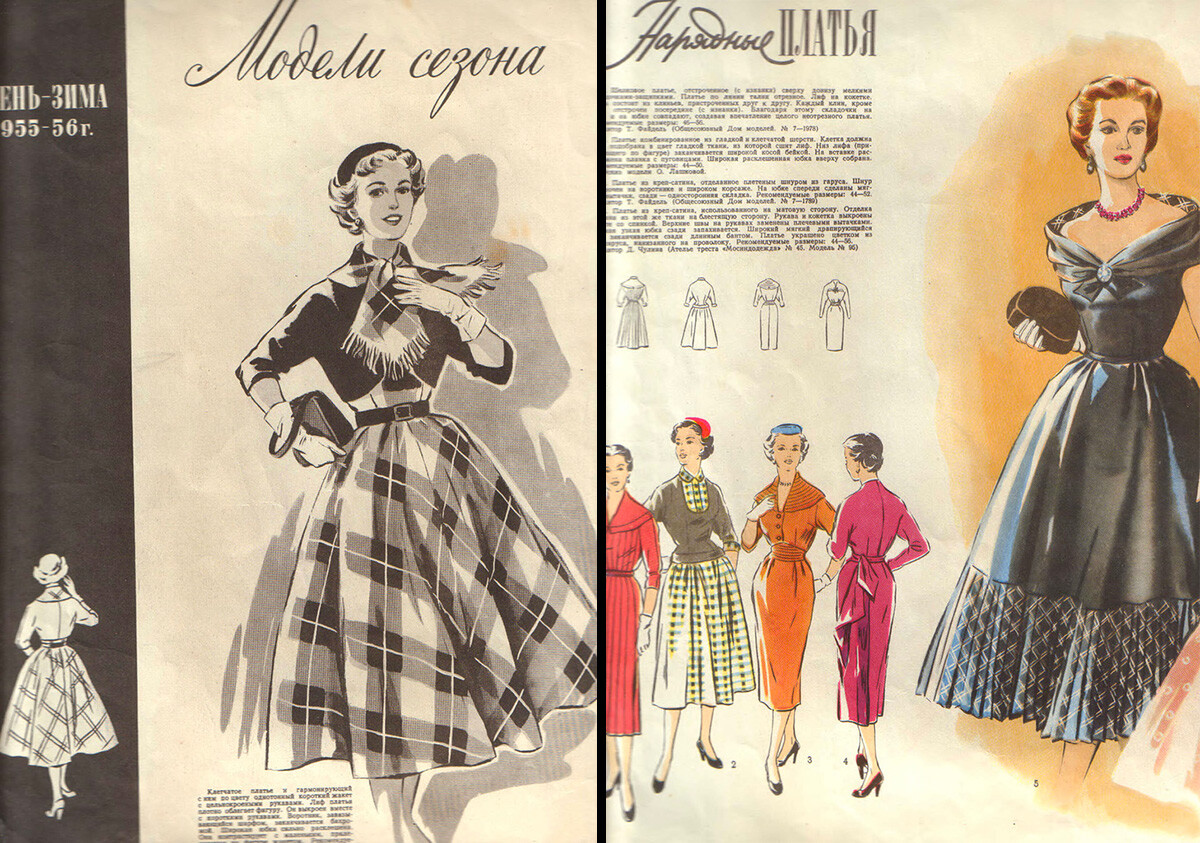
Retro fashion, 'Models of the season', 1955-1956.
Archive photoSome magazines even had paper patterns, but not in full size and the level of detail usually left much to be desired. Often, clothing made with these patterns turned out to be unwearable. In the end, fashionable and interesting clothing remained a privilege of those who could afford to regularly use the services of a high-level sewing studio or of someone who mastered the craft themselves.
Besides, there was another problem with these magazines – it was completely unclear what type of women they were issued for. Not foreigners, it seemed, but they were also not for the women who lived in the Soviet reality.
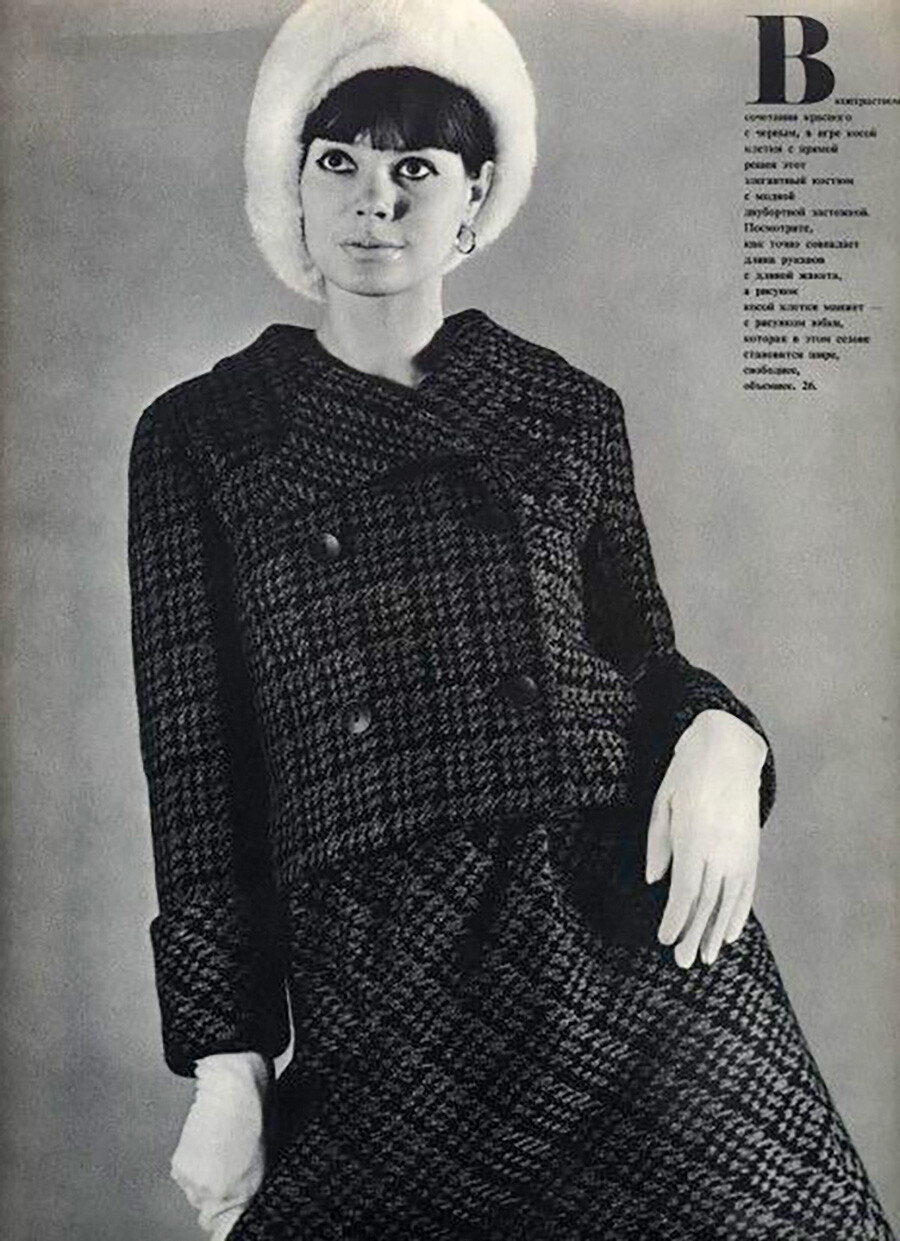
Regina Zbarskaya, Soviet model.
Archive photoBut the German magazine Burda Moden had a wealth of experience of live communication with its target audience. It began to be issued from 1950 onward under the leadership of Aenne Burda in Germany, Austria and Switzerland. It didn’t just demonstrate clothing models but also had a very detailed, step-by-step instruction on how to replicate what you see in the photo. And the replica came out truly well, thanks to the perfectly calibrated paper patterns in full size and for all clothing sizes.
In 1986, ‘Aenne Burda’ publishing house and the State Foreign Publishing Committee signed an agreement – the magazine was to be translated in the USSR, but printed in Germany. One hundred thousand copies of the magazine were brought to Moscow along with the equipment and dresses for a fashion show, timed for the magazine’s presentation. It took place on March 3, 1987, in the Pillar Hall of the House of the Unions – the date was chosen on purpose to congratulate all Soviet women ahead of International Women’s Day on March 8. The magazine quickly became a scarce commodity: women made special arrangements with the kiosk sellers to have the time to purchase the ‘Burda’ magazine, others borrowed it from acquaintances and libraries.
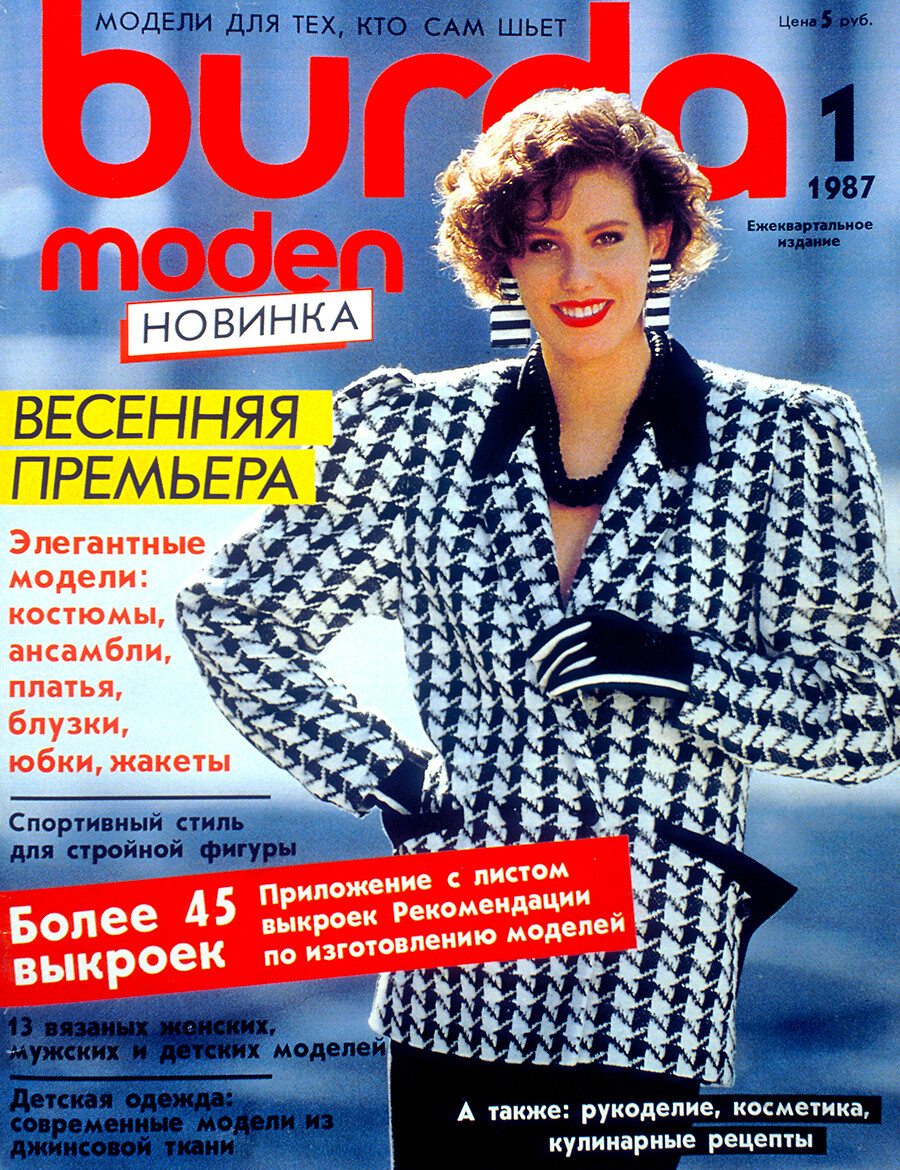
Cover of the 1st 'Burda' magazine published in USSR.
SputnikIt turned out that Soviet readers had a lot in common with German ones – the language of the magazine, in which it was speaking to its audience, was as close and understandable for them. This colorful publication with colored photos of striking women, dressed in stylish everyday clothing, became somewhat of a release vent from the world of deficit for Soviet women. Despite the fact the tailoring of a clothing model from the magazine didn’t require any special talents, it looked so spectacular that, from the side it, seemed like a thing of a complex cut. “I had a favorite tulip skirt, I’m even thinking of sewing it again – it was made of heavy, thick, dark green silk. Folds flew down from the waist and towards the bottom the skirt was narrower. It looked great, but how simple it was – just two seams!” Marina recalls, who was reading the magazine at the end of the 1980s.
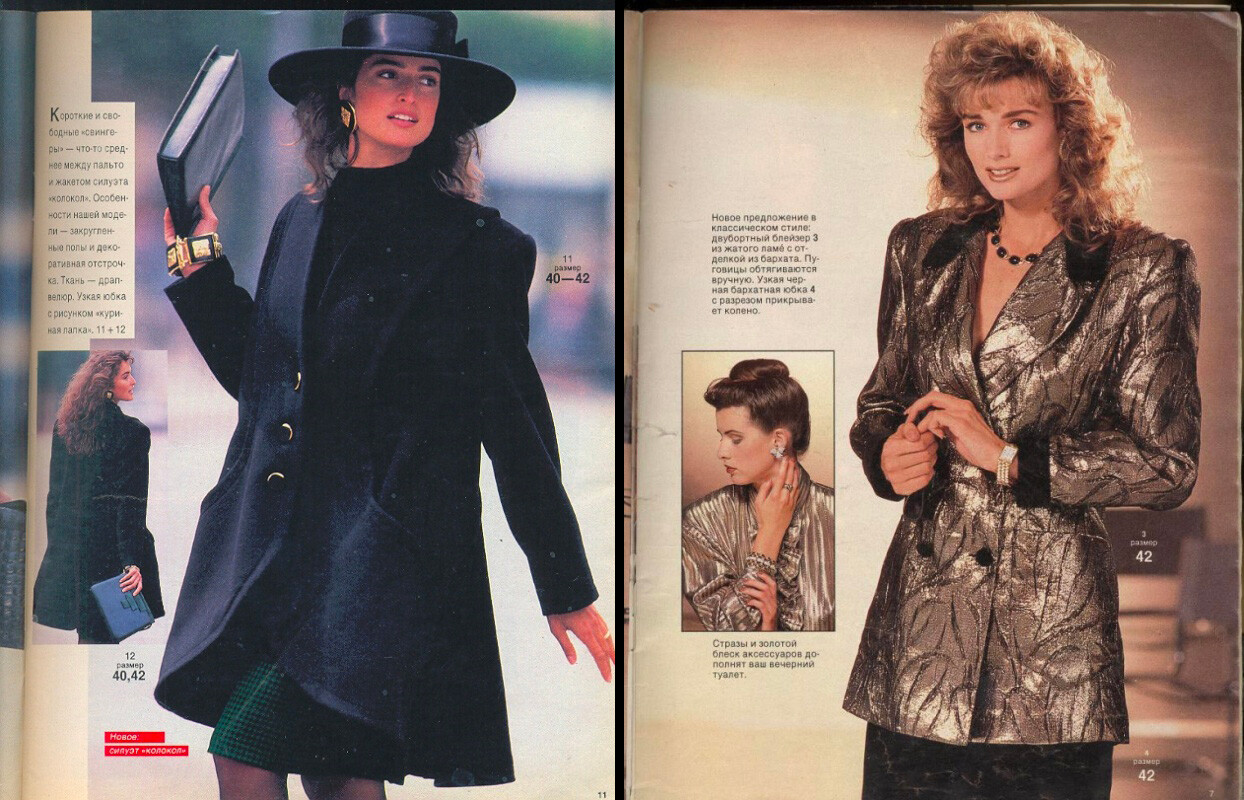
Despite the deficit of nice-looking ready-made clothing, one could find a variety of quality fabrics in the USSR. Although, sometimes they had to be modified. For example, to create the effect of worn-out jeans, a stiff brush and ‘Belizna’ bleach were used. Clothing accessories were often also hand-made – standard buttons that could be found in a shop looked foreign on ‘Burda’ clothing models.
The publication acquainted its reader with a way of life that was radically different from their own, so ‘Burda’ became popular even among those who didn’t know how to sew and didn’t use the services of a sewing workshop – they just read it to look at a piece of the Western world. Soon, this world began to seep into Soviet everyday life: “I worked at a sewing workshop; our clients often showed up with the magazine and showed us a model they liked so we could replicate it. Sometimes, it was changed a bit. At some point, we simply began using the magazine as a catalog – we kept it at work. Also, everyone started copying haircuts and hairstyles; the ‘Princess Diana’ haircut was especially popular. People were coming to hairdressers with the magazine and pointing at what they wanted,” Alena, a tailor and ‘Burda’ reader, remembers.
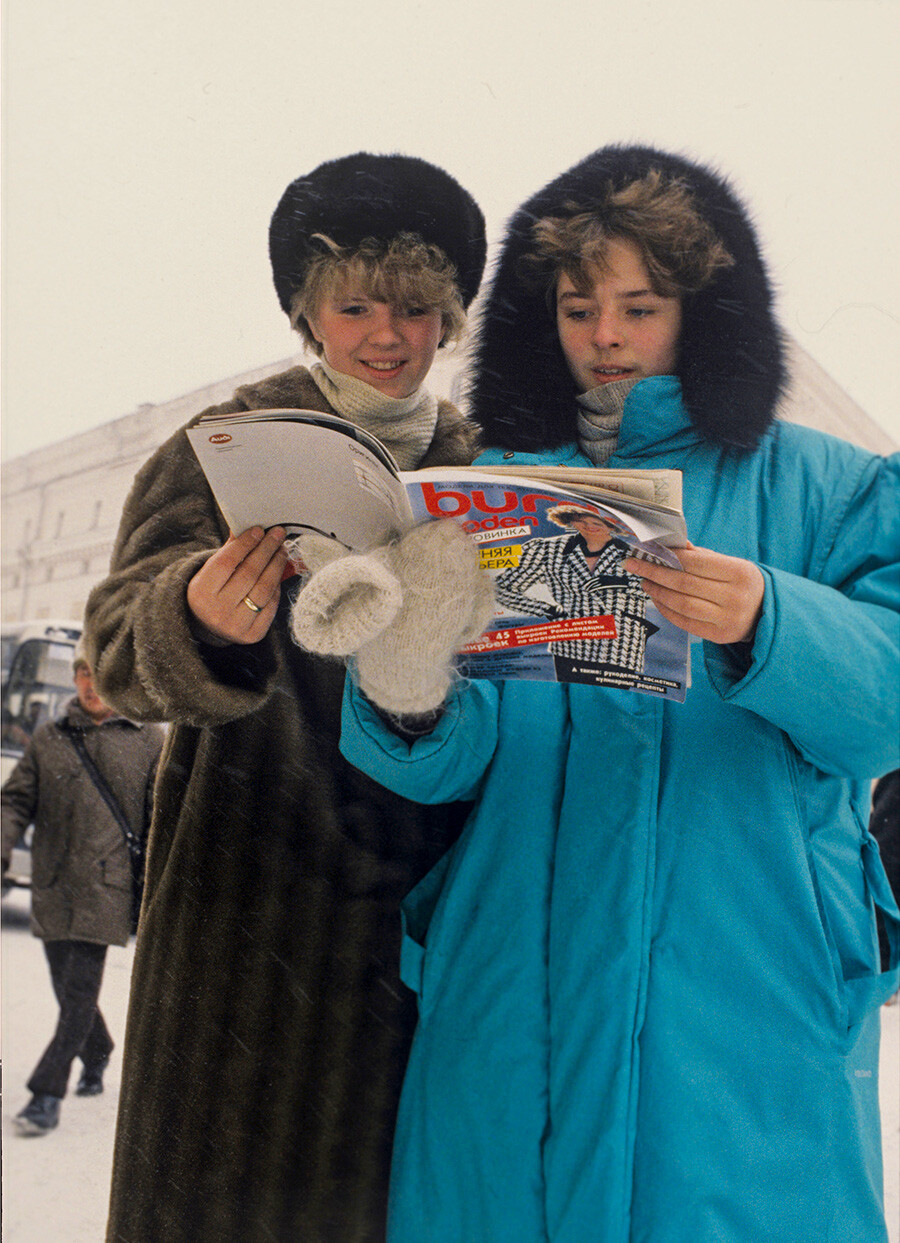
Muscovites reading 1st 'Burda' issue.
Alexander Makarov/SputnikDear readers,
Our website and social media accounts are under threat of being restricted or banned, due to the current circumstances. So, to keep up with our latest content, simply do the following:
If using any of Russia Beyond's content, partly or in full, always provide an active hyperlink to the original material.
Subscribe
to our newsletter!
Get the week's best stories straight to your inbox